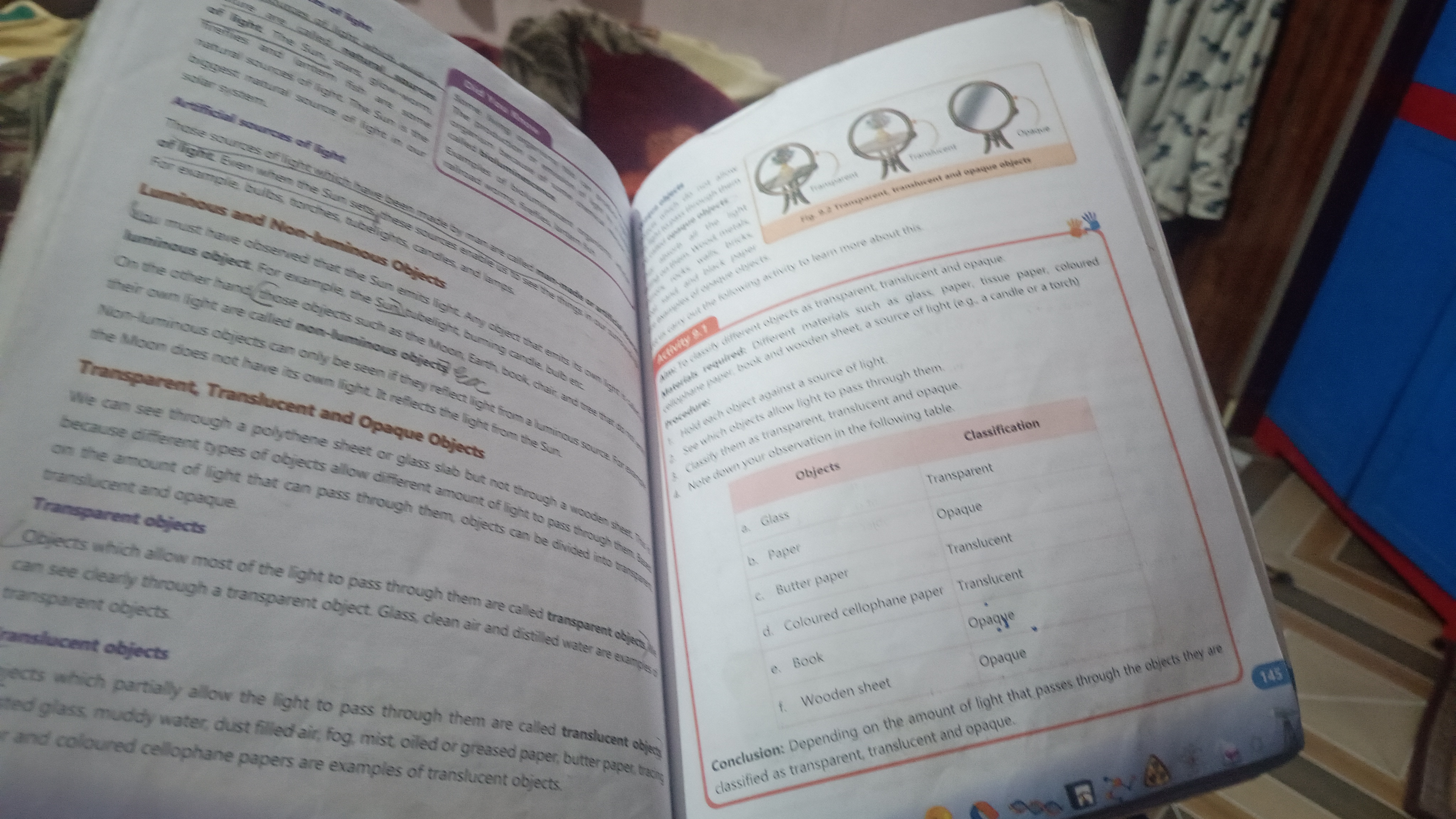What are transparent, translucent, and opaque objects? Please provide definitions and examples.

Understand the Problem
The question is likely about understanding the properties of light and how different materials classify as transparent, translucent, or opaque. The user may be asking for clarification on these concepts or examples of objects in each category.
Answer
Transparent: glass. Translucent: butter paper. Opaque: wood.
Transparent objects allow most light to pass through them, making objects behind them clearly visible, e.g., glass and clean water. Translucent objects allow some light to pass through but scatter it, making objects behind them appear blurry, e.g., frosted glass and butter paper. Opaque objects do not allow light to pass through, blocking visibility, e.g., wood and stone.
Answer for screen readers
Transparent objects allow most light to pass through them, making objects behind them clearly visible, e.g., glass and clean water. Translucent objects allow some light to pass through but scatter it, making objects behind them appear blurry, e.g., frosted glass and butter paper. Opaque objects do not allow light to pass through, blocking visibility, e.g., wood and stone.
More Information
Knowing the differences between transparent, translucent, and opaque materials is important for understanding how light interacts with different surfaces and materials in daily life.
Tips
Common mistakes include confusing translucent and transparent objects. Remember, transparent objects provide a clear view through them, while translucent objects do not.
Sources
- Explain the difference between a transparent, translucent and an opaque medium - byjus.com
- Transparent vs. Translucent vs. Opaque Compared - yourdictionary.com
- Transparent, Translucent, and Opaque - Light - toppr.com
AI-generated content may contain errors. Please verify critical information